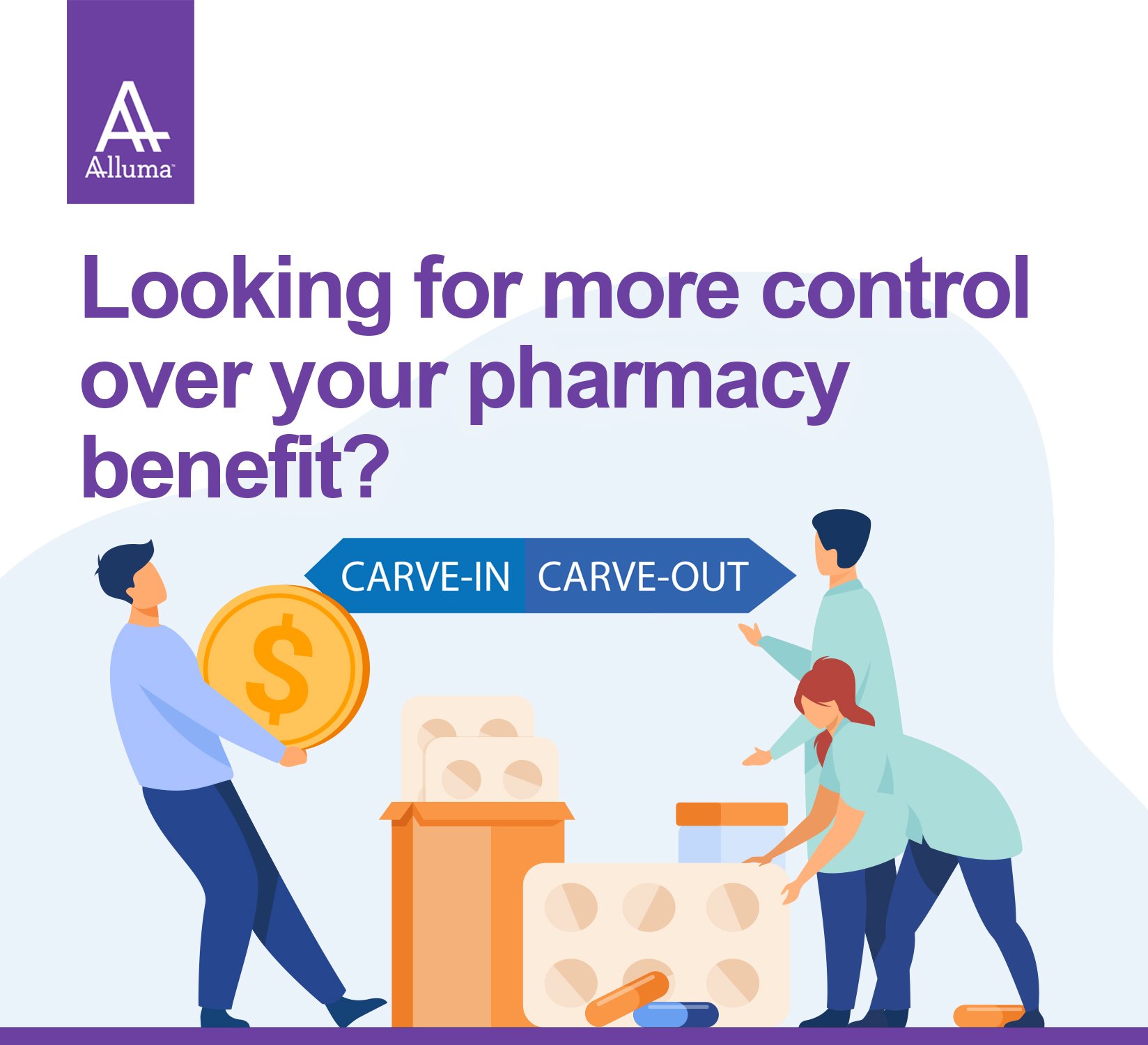Navigating the complexities of pharmacy benefits can be a daunting task for employers. Understanding the nuances between carve-in and carve-out pharmacy benefits is essential for making informed decisions that align with your organization's goals and budget. In this blog post, we'll delve into the distinctions between these two benefit structures, providing you with the knowledge to optimize your pharmacy benefit strategy. By the end of this article, you'll have the insights you need to determine which option best suits your organization's unique needs.
Understanding carve-in vs. carve-out pharmacy benefits
Carve-in pharmacy benefits
In a carve-in model, pharmacy benefits are integrated into the overall healthcare plan administered by the insurer or managed care organization. This means that the same entity manages both medical and pharmacy benefits. Providers typically access pharmacy services through the same network of providers and pharmacies as they do for other medical services. Carve-in arrangements offer simplicity in administration and may provide some level of care coordination between medical and pharmacy services. However, they may lack the flexibility and customization options available in carve-out models.
Carve-out pharmacy benefits
Conversely, carve-out pharmacy benefits involve separating pharmacy benefits from the core healthcare plan and outsourcing their management to a specialized pharmacy benefit manager (PBM). Under this model, PBMs handle functions such as formulary management, pharmacy network contracting, claims processing and medication utilization review. Carve-out arrangements afford greater flexibility in benefit design and more extensive access to cost-saving opportunities, such as preferred pharmacy networks and rebate negotiations. They also allow for tailored clinical programs and proactive management of high-cost specialty medications.
Three primary reasons to carve-out pharmacy benefits?
1. Cost control and transparency
Carve-out pharmacy benefits offer enhanced opportunities for cost control and transparency compared to carve-in models. By separating pharmacy benefits, employers and insurers gain more visibility into drug spending, enabling them to identify cost drivers, evaluate the effectiveness of formulary management strategies and implement targeted cost-saving initiatives. Additionally, carve-out arrangements facilitate direct negotiation with PBMs, empowering stakeholders to secure competitive pricing and maximize savings through rebates and discounts.
2. Clinical flexibility and specialization
Carve-out pharmacy benefits provide the flexibility to implement tailored clinical programs and interventions that address specific population health needs. PBMs specializing in pharmacy benefit management possess expertise in medication therapy management, utilization review and specialty pharmacy services. This specialized knowledge equips them to develop proactive strategies for managing chronic conditions, improving medication adherence and optimizing therapeutic outcomes. By leveraging clinical data and evidence-based practices, carve-out PBMs can drive better health outcomes while containing costs.
3. Innovative solutions and vendor choice
Opting for a carve-out pharmacy benefit model enables employers and insurers to access a broader range of innovative solutions and vendor options. PBMs compete for business based on their ability to deliver value-added services, such as advanced analytics, population health management tools and provider engagement platforms. This competitive landscape fosters innovation and drives continuous improvement in service quality and performance. Moreover, carve-out arrangements empower stakeholders to select PBMs that align with their organizational priorities, values and service requirements, facilitating strategic partnerships that support long-term goals.
In conclusion, while both carve-in and carve-out pharmacy benefit models have their merits, carve-out arrangements offer distinct advantages in terms of cost control, clinical flexibility and access to innovative solutions. By separating pharmacy benefits and entrusting their management to specialized PBMs, employers and insurers can optimize both the financial and clinical aspects of pharmacy benefit administration, ultimately enhancing the value proposition for providers and stakeholders alike. As healthcare continues to evolve, carve-out pharmacy benefits are likely to remain a compelling option for organizations seeking to achieve better outcomes and greater efficiency in pharmaceutical care delivery.
Impact on self-insured employers
In a 2017 survey by the National Pharmaceutical Council, 63 percent of corporate executives believed that PBMs lacked transparency about how they made money. Without full transparency, prescription pricing is so complex that it’s virtually impossible for even the best-informed plan sponsor to understand the relationship between PBM fees and actual drug costs. In addition, 58 percent of respondents believed that contracts were too complex, ambiguously worded and often benefitted PBMs at the expense of employers. Perhaps most telling, only a third of employers said their PBMs were “strongly aligned with their own goals for managing employee health, productivity and costs.” In the same NPC survey, only 30 percent of corporate executives said they had a complete understanding of their PBM contracts. Faced with the complexity of prescription benefits, self-insured employers often turn to consultants, health plans and the “Big Three” PBMs themselves for recommendations on plan design.
The Problem
America is facing a crisis with rising health care costs, especially when it comes to the costs of prescription drugs. Drug costs are skyrocketing—especially generic drugs whose costs logically could be expected to remain flat or even decrease.
Although many factors contribute to rising health care costs, attention is beginning to focus on the largely hidden role played by pharmacy benefit managers (PBMs). Over the last three and a half decades, PBMs have expanded their behind-the-scenes role as claims administrators to become power players in a trillion-dollar industry. As prescription drug costs have risen, PBM earnings have greatly outpaced health insurers, retail pharmacies and pharmaceutical wholesalers.

